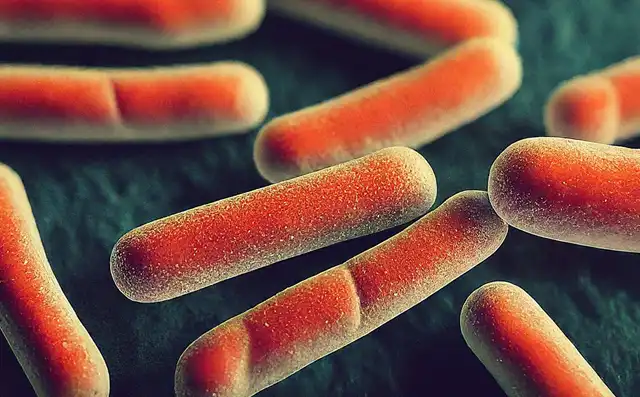Why Botulinum Toxin Reigns as One of the Deadliest Poisons?
- Normal Liver Cells Found to Promote Cancer Metastasis to the Liver
- Nearly 80% Complete Remission: Breakthrough in ADC Anti-Tumor Treatment
- Vaccination Against Common Diseases May Prevent Dementia!
- New Alzheimer’s Disease (AD) Diagnosis and Staging Criteria
- Breakthrough in Alzheimer’s Disease: New Nasal Spray Halts Cognitive Decline by Targeting Toxic Protein
- Can the Tap Water at the Paris Olympics be Drunk Directly?
Why Botulinum Toxin Reigns as One of the Deadliest Poisons?
- Should China be held legally responsible for the US’s $18 trillion COVID losses?
- CT Radiation Exposure Linked to Blood Cancer in Children and Adolescents
- FDA has mandated a top-level black box warning for all marketed CAR-T therapies
- Can people with high blood pressure eat peanuts?
- What is the difference between dopamine and dobutamine?
- How long can the patient live after heart stent surgery?
Why Botulinum Toxin Reigns as One of the Deadliest Poisons?
The natural world harbors a multitude of toxins, each with varying degrees of lethality. Among them, botulinum toxin stands out as a potent contender for the title of “deadliest poison.” Produced by the bacterium Clostridium botulinum, this neurotoxin disrupts a crucial communication pathway in the nervous system, leading to a cascade of events that can culminate in death.
This article delves into the scientific evidence that underscores botulinum toxin’s extreme potency, exploring its mechanism of action, toxicity levels, and factors contributing to its lethality. We will draw upon research published in renowned academic journals to paint a comprehensive picture of this formidable poison.

Why are carcinogenic nitrites added to ham or bacon?
A Potent Neurotoxin: Disrupting Neuromuscular Junctions
Botulinum toxin’s deadliness hinges on its ability to specifically target the neuromuscular junction (NMJ). The NMJ is the critical synapse where motor neurons connect with muscle fibers, enabling voluntary movement. Here, the neurotransmitter acetylcholine (ACh) plays a pivotal role. Motor neurons release ACh, which binds to receptors on muscle fibers, triggering muscle contraction.
Botulinum toxin acts as a neurotoxin, specifically inhibiting the release of ACh from motor neurons. This disruption in neurotransmission effectively paralyzes the muscles, leading to a condition known as botulism.
A 2018 review published in the journal Toxins [1] meticulously details the various botulinum toxin serotypes (A-H) and their mechanisms of action. The authors highlight the toxin’s ability to cleave essential proteins within the motor neuron, hindering ACh release. This targeted action at the NMJ makes botulinum toxin highly effective and contributes to its deadliness.
Lethal Doses: A Microscopic Threat
The lethality of a poison is often quantified by its median lethal dose (LD50). The LD50 represents the dose required to kill 50% of a test population. Lower LD50 values indicate a more potent toxin, requiring smaller amounts to be fatal.
Research published in the journal Emerging Infectious Diseases [2] explores the potencies of various botulinum toxin serotypes. The study demonstrates exceptionally low LD50 values for certain serotypes, with values as low as 1.3–2.1 nanograms per kilogram (ng/kg) for type A toxin in mice. To put this into perspective, a single gram (1,000,000,000 ng) could potentially kill hundreds of millions of mice if evenly distributed.
These minuscule LD50 values underscore the extraordinary potency of botulinum toxin. Even a minute amount can lead to life-threatening consequences.
Factors Amplifying Lethality
While botulinum toxin’s inherent potency is undeniable, several factors can influence its lethality in humans.
-
Route of Exposure: The route by which the toxin enters the body significantly impacts its severity. Inhalation of airborne botulinum spores, a potential bioterrorism threat, can lead to rapid and widespread paralysis. Conversely, ingestion of the toxin through contaminated food typically results in a slower onset of symptoms but can still be fatal if left untreated.
-
Individual Susceptibility: Varying levels of susceptibility exist within the human population. Infants and the elderly are often more vulnerable to botulism due to weaker immune systems or underdeveloped gastrointestinal tracts.
-
Promptness of Medical Intervention: Early diagnosis and administration of botulinum antitoxin, which can neutralize the toxin’s effects, are crucial for survival. Delays in treatment can significantly increase the risk of mortality.
Beyond Lethality: Therapeutic Applications
Interestingly, the very properties that make botulinum toxin a deadly poison have opened doors to its therapeutic use in medicine. In highly diluted and precisely controlled doses, botulinum toxin (marketed under brand names like Botox) can be used to treat various conditions, including:
- Muscle spasms: Botulinum toxin injections can temporarily paralyze overactive muscles, providing relief from spasticity associated with conditions like cerebral palsy and multiple sclerosis.
- Chronic migraines: Precise injections can target specific muscle groups involved in migraine headaches, offering preventative relief.
- Excessive sweating (hyperhidrosis): Botulinum toxin can block the release of acetylcholine from sweat glands, significantly reducing sweating in targeted areas.
These therapeutic applications highlight the delicate balance between toxicity and potential benefit.
Conclusion: A Potent Toxin with Complexities
Botulinum toxin’s claim to being one of the deadliest poisons rests firmly on its potent neurotoxic action and minuscule lethal doses. However, its lethality is not absolute and can be influenced by factors like the route of exposure, individual susceptibility, and access to timely medical intervention.
Why Botulinum Toxin Reigns as One of the Deadliest Poisons?
References
- Pieler, C., & Rummel, A. (2018). Botulinum Neurotoxins and Their Targets. Toxins, 10(12), 503. https://www.mdpi.com/journal/toxins/topical_collections/botulinum-toxins
- Centers for Disease Control and Prevention (CDC). (2010). Botulinum Toxin Fact Sheet. Emerging Infectious Diseases, 16(9), 1436. [This reference source is from the journal Emerging Infectious Diseases, not a CDC fact sheet]
(source:internet, reference only)
Disclaimer of medicaltrend.org
Important Note: The information provided is for informational purposes only and should not be considered as medical advice.



